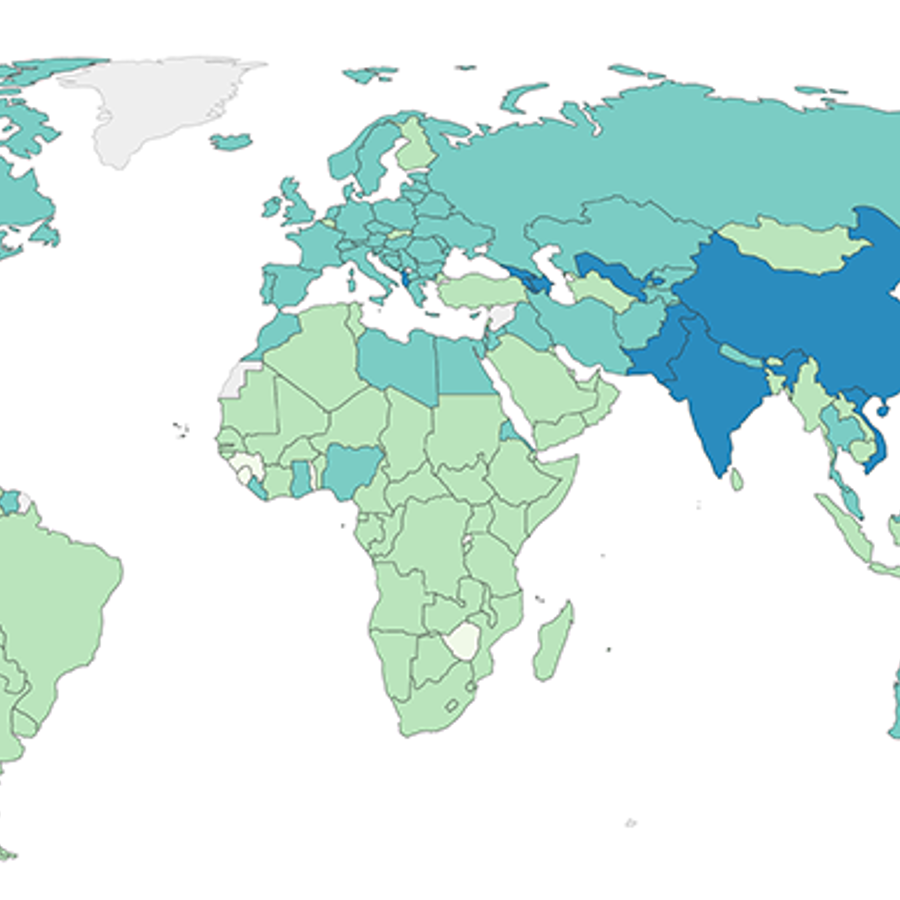
If my partner had 4 sons from a previous marriage, am I likely to have a boy as well?
March 3, 2016

- Related Topics:
- Sex ratio,
- Genetic sex,
- Complex traits
A curious adult from Washington asks:
"My boyfriend has 3, possibly 4 boys from a previous marriage, but no girls. I am now pregnant and am wondering if I am more likely to have a boy?"
This is a great question. The easy answer is that no, you are not really more likely to have a boy.
Well, you are a bit more likely to have a boy, but so is everyone else. There are about 105 boys born for every 100 girls (we will call this the sex ratio).
But the fact that your boyfriend had four sons in a row doesn’t change these odds. From a statistics perspective, what came before doesn’t affect what comes next.
The classic example of this is flipping a coin. If you get four heads in a row, your chances for heads on the next flip are still 50-50. The coin doesn’t remember what came before.
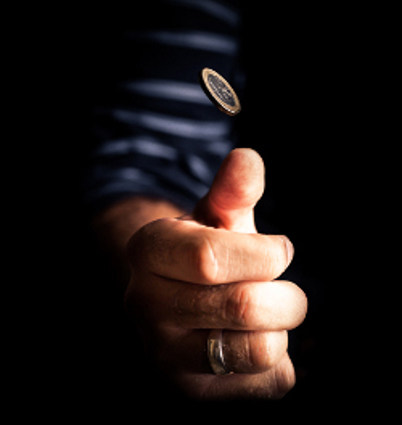
That being said, there are cases out there where people have more boys than girls, or more girls than boys. These cases don’t seem to be entirely by chance either. Something seems to be affecting the odds.
A great example of this is the difference in sex ratio from country to country. For example in Zimbabwe in 2017 it was about equal, with 102 boys born for every 100 girls. But in Liechtenstein there were 126 boys born for every 100 girls.
We don’t know where these differences come from but it is an active area of research. Perhaps we may one day know why so many Liechtensteiners are boys!
For the rest of the article we will talk about some things scientists have studied that might affect the sex of a baby. It isn’t everything, but it might help to show at least some of the ways someone might be more likely to have one sex or the other.
Y Marks the Spot
To start with, let’s talk about how someone is born either a boy or a girl. The answer is in our DNA. Which makes sense since DNA has the instructions for building your entire body.
For example, DNA tells you what color eyes and hair you will have, how easily you can digest milk and so on. It also tells you what sex you will be.
It takes a lot of instructions to make us, so we have a lot of DNA. To organize all of it our cells put DNA into things called chromosomes. A chromosome is a long piece of DNA that has been wound up like a spool of thread so that it can be packaged neatly.
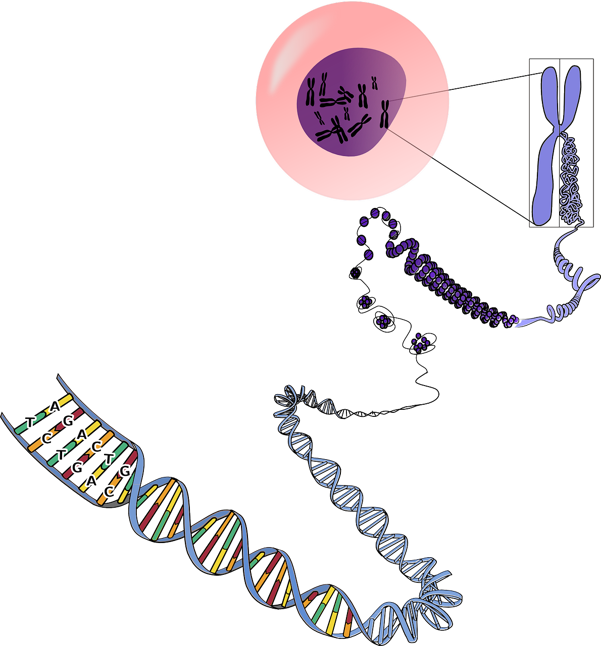
Almost everyone has 22 different pairs of chromosomes plus a pair of sex chromosomes. It is this last pair that tells us whether we are born with the physical characteristics of being male or female.
These sex chromosomes come in two types: X and Y. Females have two X chromosomes while males have an X and a Y.
When a woman has a baby she passes on one of her X chromosomes, while men pass on either their X or Y chromosome. If the father passes on his X, the baby will have two X chromosomes and will be born a girl. If the father passes on his Y, the baby will have an X and a Y chromosome and will be born a boy.
So this is the complicated way that nature flips coins to figure out sex in people (and most mammals). Now let’s see how those odds can be changed.
Sex Ratio and Cultural Differences
One way to affect a coin toss is to not count it when it comes up tails. Now you’ll only get heads!
This is sort of what happens in some countries. Some of the country-specific differences that we see might be coming from only having one sex or the other being born.
One way this is done is through sex-specific abortion. Another way this can happen is when the embryos are being made outside the mother. In some countries, parents figure out which embryos are going to be the sex they want and only put those in the mother.
Of course there is nothing natural about this! But nature can affect the odds too. As we said before, we still don’t have a firm grasp on how though.
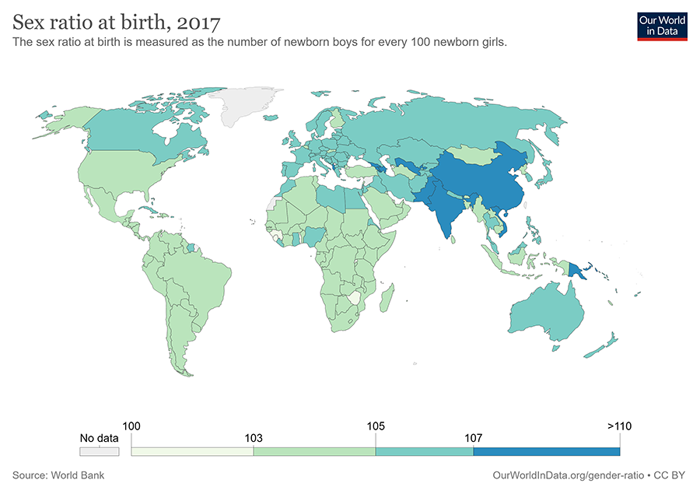
Sex Ratio at Birth Not Always the Same As at Conception
In the last example, people didn’t change which sexes were conceived. They only changed which ones were born. It looks like nature might sometimes do the same thing.
Remember that the sex ratio that we see at birth comes after nine months of development in the mother, and the sex ratio might change during that time.
For example, this study[1] found that very shortly after conception there is no male preference in the sex ratio. However, throughout the course of pregnancy the sex ratio changed.
During certain points in pregnancy male fetuses were more likely to be lost. At other points female fetuses were more likely to be lost. It’s as if we flipped a lot of coins at once, and then went through removing either heads or tails at different times before we counted them up.
Overall female fetuses were lost at a higher rate, so more males were born than females. This helps to explain that 105 number I talked about earlier.
Things that Affect Sex Ratio
What if we really stressed the coin before we flipped it? What if we stressed it out so much that it bent? Then we might also affect whether it is coming up heads or tails.
It looks like something like that might happen during really stressful events. There are a few studies that focus on things like wars or natural disasters. Some studies show that the sex ratio can be affected briefly in countries after wars or natural disasters[2,3].
Because the sex ratio changes, we know that something that happened during that time changed it. While we still aren’t sure what that something is, scientists do have some theories.
One is that the stress level of a mother who is pregnant during a war or natural disaster might affect the survival of fetuses. Another is that mom’s hormone levels are affected because dad is away.
We also don’t know when the change happened. It could have been at conception or later in the pregnancy.
To make things even more confusing, after different wars and disasters we have seen the sex ratio swing in both directions. It’s really not clear what might be going on here.
Scientists have looked at the age of the mother or father, the time between births, the order of births, and even the number of spouses a person has. Of these, it looks like only the age of the parents[4] and the number of spouses[5] might affect the sex of the baby. Of course there might be other things that affect the sex ratio that scientists haven’t thought of yet.
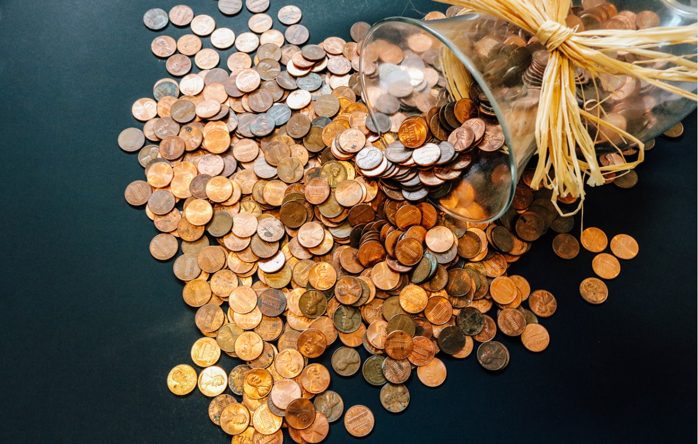
Causation Versus Correlation
When talking about something like sex ratio it’s important to remember that there are a lot of things that might affect sex, and they are all tangled up. That means it’s very hard for us to tell what causes the sex ratio and what is just associated (or correlated) with it.
For example, it looks like the age of mom or dad might affect the sex of a baby. But older moms and dads might have different hormone levels or different stress levels. This makes it very hard for scientists to tell whether it is the age, hormones, or stress affecting the sex of a baby.
We can’t see the coin being flipped so we don’t know why the heads and tails are coming up the way they do. We only know that they are.

Author: Maggie Nakamoto
When this answer was published in 2016, Maggie was a Ph.D. candidate in the Department of Microbiology & Immunology, studying parasite and RNA biology in John Boothroyd’s laboratory. Maggie wrote this answer while participating in the Stanford at The Tech program.
 Skip Navigation
Skip Navigation
